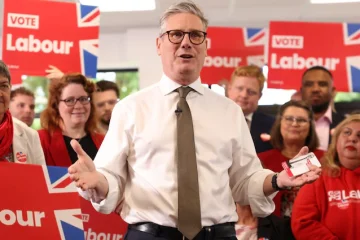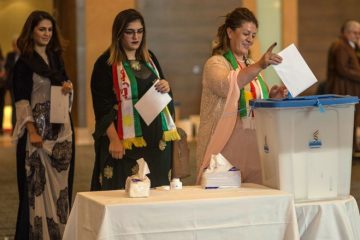
OxPol Blogcast. Women in Politics – Violence Against Women in Political and Public Life
OxPol Blogcast showcases research, analysis, insights, and experiences from the members of the University of Oxford’s Department of Politics and International Relations (DPIR), and specialist guests from the Oxford academic community and beyond. On this episode, we discuss how gender-based violence, one of the most devastating human rights issues of our time, manifests itself in political and public life. OxPol Blogcast host Anastasia Bektimirova welcomes four guests to unpack the issue of violence against women, the many forms it can take, how the experiences vary between serving politicians and candidates, men and women, and the activities, initiatives and mechanisms that are in place to combat it and help those who have become victims. With Reem Alsalem, the United Nations Special Rapporteur on violence against women, its causes and …
In the Court of Public Opinion: Judicial Supremacy v. The Rule of Law
This is a brief reply to the review of my monograph, Transnational Networks and Elite Self-Empowerment: The Making of the Judiciary in Contemporary Europe and Beyond (OUP 2019) by LSE Human Rights Prof. Conor Gearty, Vice-President of the British Academy. I am grateful to Prof. Gearty for reviewing my monograph at such length. I am replying here in hopes that the exchange may advance our understanding of outstanding questions about Judiciary institutional design (and designers)—a topic that receives insufficient attention. This is a summary of my full reply to Gearty, which is accessible here. Gearty and other critics are invited to rebut my challenges to the legitimacy and desirability of the judicialisation of politics. First, I will try to summarise …
Why Police Reform Won’t Do the Trick in Colombia
Times are grim for human rights and the rule of law in Colombia. Since the end of April, tens of thousands of Colombians have taken to the streets after President Iván Duque announced a controversial tax reform. While the government has withdrawn the reform proposal, protests are ongoing as citizens express their frustration over structural inequalities. Discontent is high across the country, especially among lower- and middle-class Colombians who have experienced increased hardship while enduring the COVID-19 pandemic. By 22 June, 83 people were killed and over 1,600 wounded, with much of the violence attributed to the Colombian National Police. The police’s anti-riot unit, known as ESMAD, has become a symbol of disproportionate policing based on the excessive use of force. The Constitution …

How do editors choose which human rights news to cover? A case study of Mexican newspapers
The mass media forms a key channel through which instances of human rights violations are made public. However, the media can only publish a small proportion of stories, as media practitioners are required to sift through wider information, deciding what to cover. A media ethnography conducted in Mexico in 2006, before and after the presidential elections, can illuminate what journalists are trying to do in their human rights coverage and how their outlooks and contexts condition the incidents that are covered.
Parts of the Mexican media played a significant role in the country’s democratic transition since the 1976 Tlateloco Massacre, resulting in a general shift among journalists away from a cozy and financially lucrative relationship with the government. This led to the growth of new ‘market-oriented’, as opposed to ‘state-oriented’, newspapers. Both usually have a human rights beat investigating citizens’ complaints about infractions committed by state institutions. This often involves collaboration with the independent human rights commissions established in the 1990s.
Within this context, this case of Mexico suggests the mixture of outlooks and contexts affecting processes of extracting human rights news from wider information can be put into four categories: newsworthiness, journalistic aims, economic aims and political aims. A human rights story is more likely to be published by a newspaper the more it corresponds to these criteria.
The first factor, newsworthiness of a story, appears to be tricky to define; many of the editors interviewed claim it was a ‘sentiment’ that was ‘uncertain’, ‘improvised’ or ‘arbitrary’. Still, their explanations suggest some common criteria for newsworthiness. Firstly, published stories generally concerned incidents where human rights were transgressed rather than respected. One editor of El Universal explained ‘human rights are there to be taken care of … Therefore it is news when they are violated.’ Other aspects of newsworthiness included novelty, exclusivity, impact, representativeness, and timeliness. In particular, the potential political impact of a violation was considered greater, and therefore more ‘newsworthy’, if it involved multiple victims or was particularly severe, as in the case of a 13-year-old girl who was denied a legal abortion after she was raped. Editors also sought to publish stories that were representative of wider problems, such as inequality. The idea, as an editor of El Universal put forward, was ‘that when we talk of inequality or poverty, people have a point of reference’.









